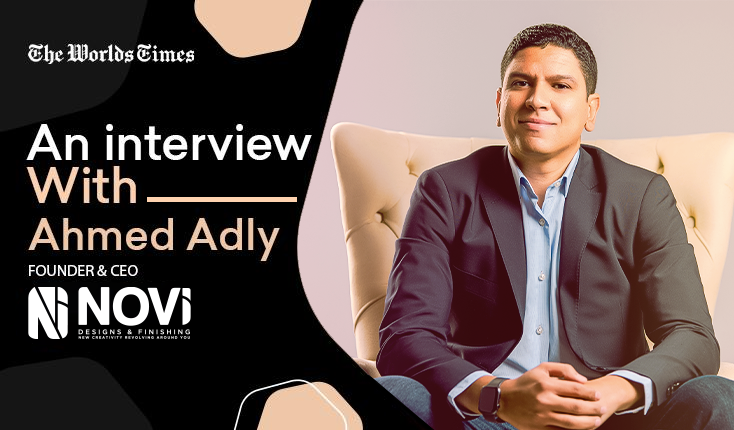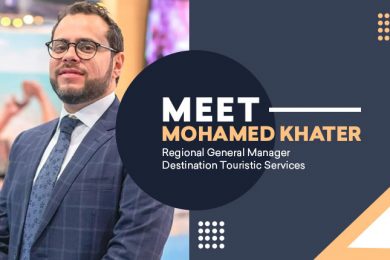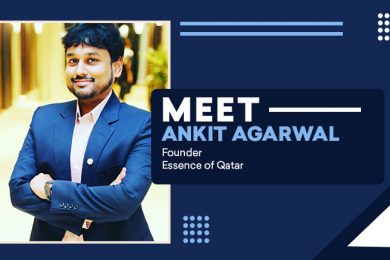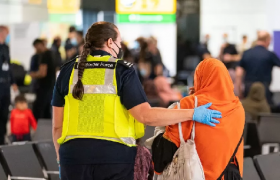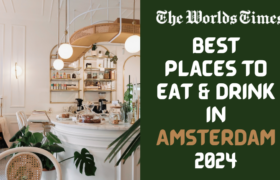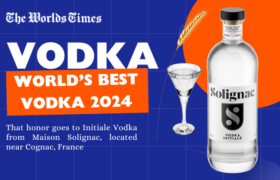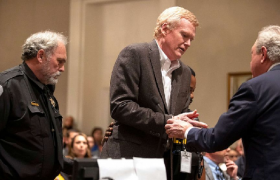This overview highlights the expertise required to excel in architectural design and infrastructure development across diverse regions. It emphasizes the integration of unique architectural elements that enhance infrastructure, the challenges of tailoring designs to meet the specific cultural, regulatory, and environmental needs of regions like Egypt, KSA, and the UAE, and the importance of fostering collaboration across multidisciplinary teams. The overview also touches on the role of emerging technologies in driving innovation and efficiency, managing stakeholder interests in large-scale projects, ensuring sustainability in extreme climates, and preparing for future industry trends through continuous learning and adaptation.
Innovative Design Integration
We started the interview by asking, “Can you share a specific project where you integrated a unique architectural design that significantly enhanced the overall infrastructure? What challenges did you face, and how did you overcome them?”
Ahmed Adly replied, “In a mixed-use urban development, we incorporated a unique design featuring integrated green spaces and energy-efficient systems.
Challenges:
- Structural Support: The green roofs and solar panels required substantial redesign of the building’s structural elements.
- Material Selection: We needed to source sustainable materials that met both aesthetic and functional requirements.
- Community Integration: Ensuring the design aligned with community expectations and local regulations.
Solutions:
- Engineering Collaboration: Worked closely with structural engineers to redesign the framework and ensure stability.
- Sustainable Sourcing: Conducted thorough research and partnered with suppliers to secure eco-friendly materials.
- Stakeholder Engagement: Held community meetings to gather feedback and adjust the design to address local needs and preferences.
Result: The project successfully enhanced urban infrastructure with improved energy efficiency and a positive community impact.”
Adapting Architectural Solutions
The Worlds Times: Given your extensive experience in Egypt, KSA, and UAE, how do you tailor your approach to meet the specific cultural, regulatory, and environmental requirements of each region?
Ahmed Adly replied, “To tailor our approach for Egypt, KSA, and UAE:
- Cultural Sensitivity: We integrate local architectural styles and cultural elements into the design. For example, in KSA, we respect privacy norms, while in the UAE, we incorporate modern luxury elements.
- Regulatory Compliance: We ensure adherence to each region’s building codes and regulations. In Egypt, we navigate complex local laws; in KSA, we align with Vision 2030; in the UAE, we follow stringent safety and sustainability standards.
- Environmental Adaptation: We design for local climates, such as implementing cooling techniques in Egypt’s hot weather, water conservation measures in KSA’s arid environment, and high-efficiency systems in the UAE’s extreme heat.
Approach:
- Local Research: Conduct in-depth studies of regional cultural, regulatory, and environmental factors.
- Customized Solutions: Adapt designs and materials to meet specific needs and preferences of each region.
- Stakeholder Engagement: Collaborate with local authorities and communities to ensure designs align with regional expectations.
Result: Our tailored approach ensures that projects are culturally relevant, compliant with regulations, and environmentally suitable, leading to successful outcomes across all regions.”
Seamless Global Project
The Worlds Times: How do you foster collaboration between multidisciplinary teams to ensure the seamless execution of complex design and build projects across multiple countries?
Ahmed Adly replied, “To foster collaboration between multidisciplinary teams across multiple countries, we focus on a few key strategies:
- Clear Communication: We establish consistent communication channels and regular meetings to keep everyone aligned and informed, regardless of location.
- Defined Roles: Clearly outlining roles and responsibilities helps prevent overlaps and ensures accountability, which is crucial for smooth project execution.
- Collaborative Planning: Involving all teams early in the project planning phase allows us to integrate diverse expertise and anticipate potential challenges.
- Cultural Sensitivity: We promote an inclusive environment that respects cultural differences, which helps facilitate better teamwork and understanding.
- Technology Use: Utilizing tools like BIM and cloud-based platforms enables real-time collaboration and access to updated project information.
- Strong Leadership: Dedicated project managers coordinate efforts and resolve conflicts, ensuring that all teams work towards common goals.
By implementing these strategies, we ensure seamless collaboration and successful execution of complex projects across different regions.”
Leveraging Technology
The Worlds Times: With the rapid advancement of technology in the construction industry, how have you incorporated new technologies into your projects to drive innovation and efficiency?
Ahmed Adly replied, “To drive innovation and efficiency in our projects, we incorporate new technologies in the following ways:
- Building Information Modeling (BIM): We use BIM to create detailed 3D models that enhance planning, coordination, and reduce errors during construction.
- Drones: Drones provide aerial site surveys and progress tracking, improving accuracy and efficiency in monitoring project status.
- Smart Sensors: We deploy sensors for real-time data on structural health and environmental conditions, enabling proactive maintenance and better decision-making.
- Virtual Reality (VR): VR allows for immersive design reviews and client presentations, improving design accuracy and client engagement.
- Automation and Prefabrication: We use automation and prefabrication techniques to speed up construction processes and improve quality control.
By integrating these technologies, we enhance project efficiency, accuracy, and overall innovation”
Navigating Stakeholder Conflicts
The Worlds Times: Can you describe a time when you had to manage conflicting interests among stakeholders in a large-scale infrastructure project? How did you ensure that the project stayed on track and met client expectations?
Ahmed Adly replied, “In a large-scale infrastructure project, we faced conflicting interests between local authorities, community groups, and private investors. To manage this:
- Stakeholder Meetings: We organized regular meetings to understand and address each party’s concerns, fostering open communication and collaboration.
- Compromise Solutions: We developed solutions that balanced interests, such as adjusting design elements to meet community needs while ensuring investor requirements were met.
- Transparent Communication: We kept all stakeholders informed with clear updates and progress reports, maintaining trust and reducing misunderstandings.
- Project Management: Strong project management ensured that despite conflicts, we adhered to timelines and budget constraints, keeping the project on track.
These steps helped align stakeholder interests, ensuring the project met client expectations and remained on schedule.”
Sustainable Design Strategies
The Worlds Times: How do you ensure that your architectural designs and infrastructure projects are both sustainable and environmentally responsible, particularly in regions with extreme climates like the Middle East?
Ahmed Adly replied, “To ensure our designs are sustainable and environmentally responsible in extreme climates:
- Climate-Responsive Design: We incorporate features like passive cooling, natural ventilation, and high-performance insulation to adapt to extreme temperatures.
- Energy Efficiency: We use energy-efficient systems, such as solar panels and LED lighting, to reduce energy consumption.
- Water Conservation: Implementing water-saving fixtures and rainwater harvesting systems helps manage scarce water resources effectively.
- Sustainable Materials: We select durable, low-impact materials that are suited to the local climate and reduce the overall environmental footprint.
- Local Expertise: Collaborating with local experts ensures our designs meet regional environmental conditions and regulations.
These practices help us create buildings that are both functional and environmentally responsible in challenging climates.”
A Case Study in Proactive Solutions
The Worlds Times: Could you provide an example of a significant risk you encountered during a project, and how your proactive measures ensured the successful delivery of the project?
Ahmed Adly replied, “During a project, we faced a significant risk of delayed material supply due to unforeseen logistical issues. To mitigate this:
- Alternative Suppliers: We identified and secured alternative suppliers to ensure material availability.
- Adjusting Timelines: We adjusted the project schedule to accommodate potential delays, with clear communication to all stakeholders.
- Regular Monitoring: We closely monitored the supply chain and project progress to address any issues promptly.
- Contingency Planning: We developed a contingency plan that included buffer periods and resource flexibility.
These proactive measures helped us manage the risk effectively and deliver the project on time and within budget.”
Navigating Future Trends
Lastly we asked, “As a leader in architectural design and infrastructure, what emerging trends do you foresee shaping the future of the industry, and how are you preparing your team and company to stay ahead?”
“Emerging trends shaping the future of architectural design and infrastructure include:
- Sustainable Architecture: Increasing focus on green building practices and renewable energy sources to minimize environmental impact.
- Smart Buildings: Integration of IoT and automation technologies for improved energy efficiency and operational control.
- Resilient Design: Emphasis on designing for climate resilience to handle extreme weather and environmental changes.
- Digital Twins: Use of digital twin technology for real-time monitoring and simulation of building performance.
To stay ahead, we are:
- Investing in Training: Ensuring our team is skilled in the latest technologies and sustainable practices.
- Adopting New Technologies: Implementing emerging tools and methods to enhance our design and project management capabilities.
- Encouraging Innovation: Fostering a culture of innovation and continuous improvement to adapt to industry changes.
These steps help us remain at the forefront of the industry and effectively address future challenges.” Ahmed Adly Concluded
Connect with Ahmed Adly on LinkedIn & Website : www.novi-df.com
Also Read:
Transforming Skincare with a Visionary Approach at ISSADA Cosmetics: Deb Farnworth-Wood
Sahar Famouri: The Story behind FID-PARIS and Its Visionary Leadership
SBFO Global Strategic Edge and Future Vision with Rudy Walgraef
